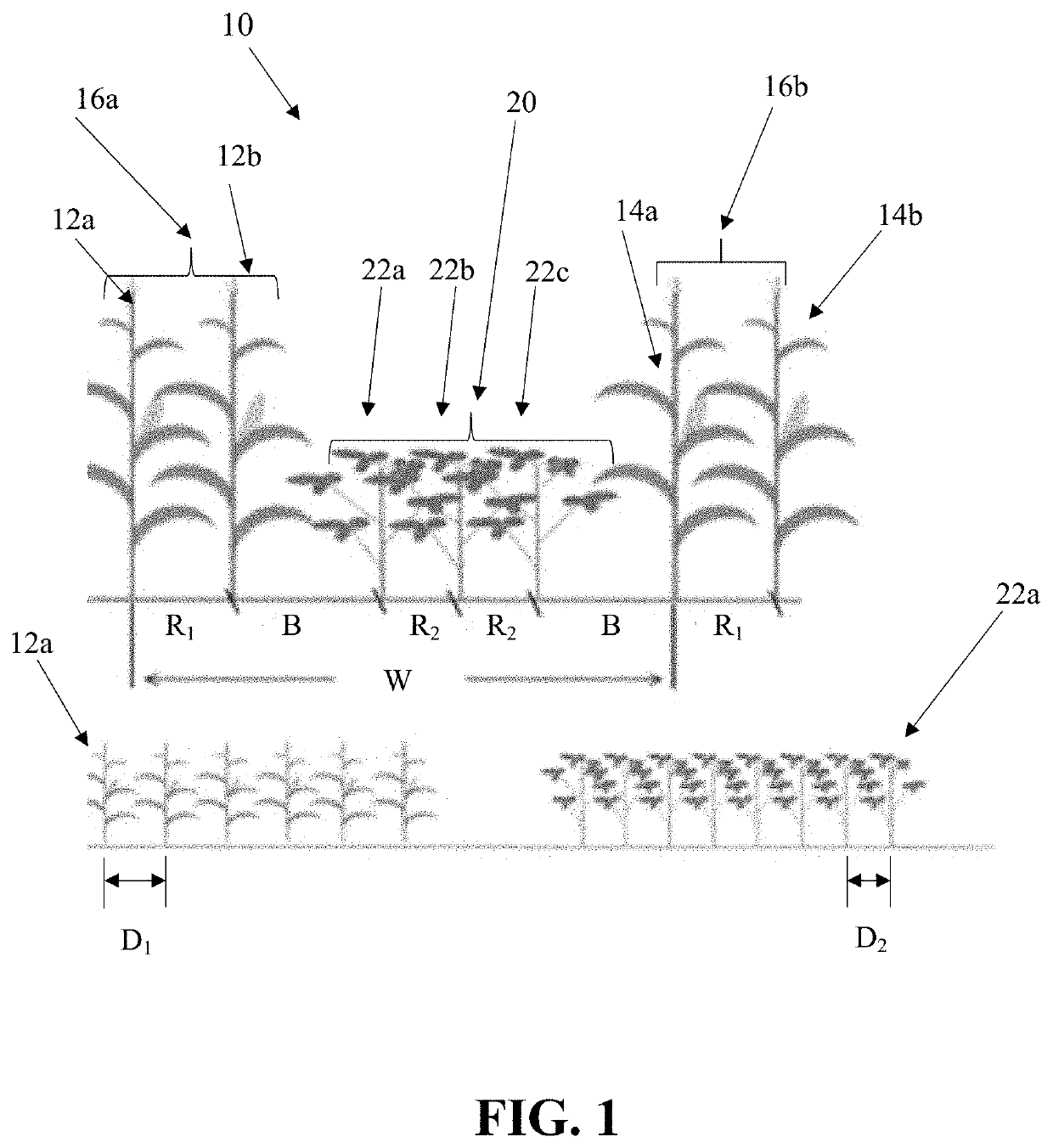Method for planting and processing high-yield forage in high altitude area
- Summary
- Abstract
- Description
- Claims
- Application Information
AI Technical Summary
Benefits of technology
Problems solved by technology
Method used
Image
Examples
example 1
[0025]The experimental site was Bamei Town, Kangding City, Ganzi Prefecture (altitude of 3450 m). Nine early maturing maize varieties (G504, G505, G415 (Provided by Heilongjiang Academy of Agricultural Sciences), KY17 (Provided by Heilongjiang Academy of Agricultural Sciences, variety code: Ke 956 Extension name KY 17), KY19 (Provided by Heilongjiang Academy of Agricultural Sciences, original code: 334, Variety name: KY 19), KF192, Heihe No. 45 (Provided by Heilongjiang Academy of Agricultural Sciences, verification / registration number: Hei Shendou 2007013), Demeiya No. 1, Demeiya No. 3), and 27 early maturing soybean varieties (Huachun No. 2, Huachun No. 6, Huachun No. 8, Huachun No. 14, Huachun No. 15 (All the Huachun soybean varieties were provided by South China Agricultural University), Zhongdou No. 30, Zhongdou No. 39, Zhongdou No. 46 (All the Zhongdou varieties were provided by Oil Crops Research Institute of Chinese Academy of Agricultural Sciences), Nandou No. 35 (Provided ...
example 2
[0027]The experimental site was Bamei Town, Kangding City, Ganzi Prefecture (altitude of 3450 m). Maize varieties were Demeiya No. 1 and No. 3; soybean varieties were Huachun No. 6 and Zhongdou No. 39. The planting density of maize was 7200˜75000 plants / hm2, and the planting density of soybeans was 14250˜150000 plants / hm2. The maize and soybeans were sown on Apr. 30, 2019 at a row ratio of 2:3 and a width of belt of 2.1 m. When the maize were in the milk ripe period, the maize and soybeans were harvested at the same time using a field integrated harvesting and shredder, and the silage was baled after the production was measured, and the nutritional quality of the silage was measured after 60 days of silage; at the same time, some maize and soybeans were harvested separately for baled silage, as comparison. The fertilization of maize rows was carried out according to local production habits, and the nitrogen fertilization was not applied to soybean rows. Phosphorus and potassium fert...
example 3
[0036]The experimental site was Zake Township, Ganzi County (altitude of 3480 m). Maize varieties were Demeiya No. 1 and No. 3; soybean varieties were Huachun No. 6 and Zhongdou No. 39. The planting density of maize was 7200˜75000 plants / hm2, and the planting density of soybeans was 14250˜150000 plants / hm2. The maize and soybeans were sown on Apr. 28, 2019 at a row ratio of 2:3 and a width of belt of 2.1 m. When the maize were in the milk ripe period, the maize and soybeans were harvested at the same time using a field integrated harvesting and shredder, and the silage was baled after the production was measured, and the nutritional quality of the silage was measured after 60 days of silage; at the same time, some maize and soybeans were harvested separately for baled silage, as comparison. The fertilization of maize rows was carried out according to local production habits, and the nitrogen fertilization was not applied to soybean rows. Phosphorus and potassium fertilizers were con...
PUM
 Login to View More
Login to View More Abstract
Description
Claims
Application Information
 Login to View More
Login to View More - Generate Ideas
- Intellectual Property
- Life Sciences
- Materials
- Tech Scout
- Unparalleled Data Quality
- Higher Quality Content
- 60% Fewer Hallucinations
Browse by: Latest US Patents, China's latest patents, Technical Efficacy Thesaurus, Application Domain, Technology Topic, Popular Technical Reports.
© 2025 PatSnap. All rights reserved.Legal|Privacy policy|Modern Slavery Act Transparency Statement|Sitemap|About US| Contact US: help@patsnap.com

